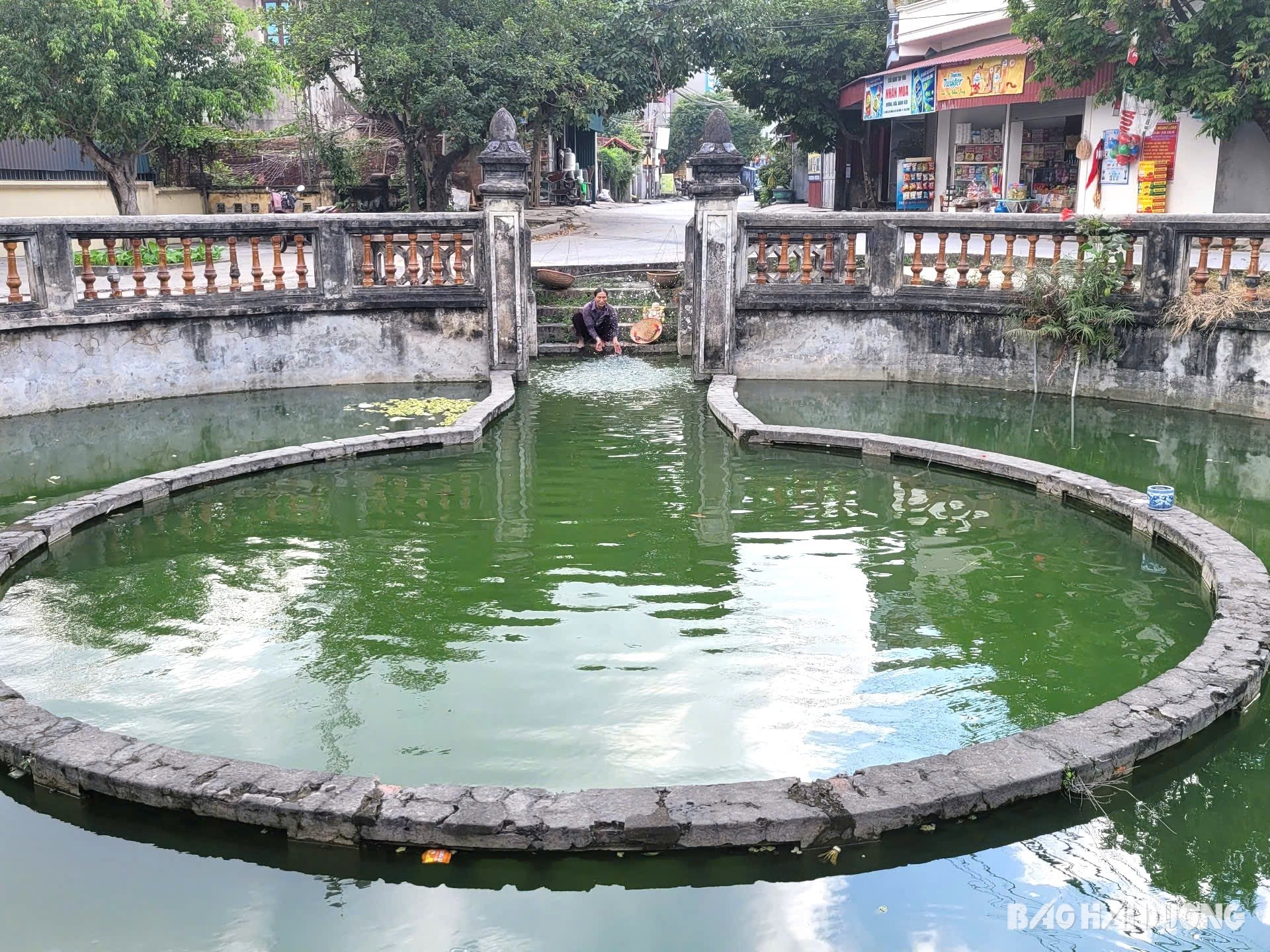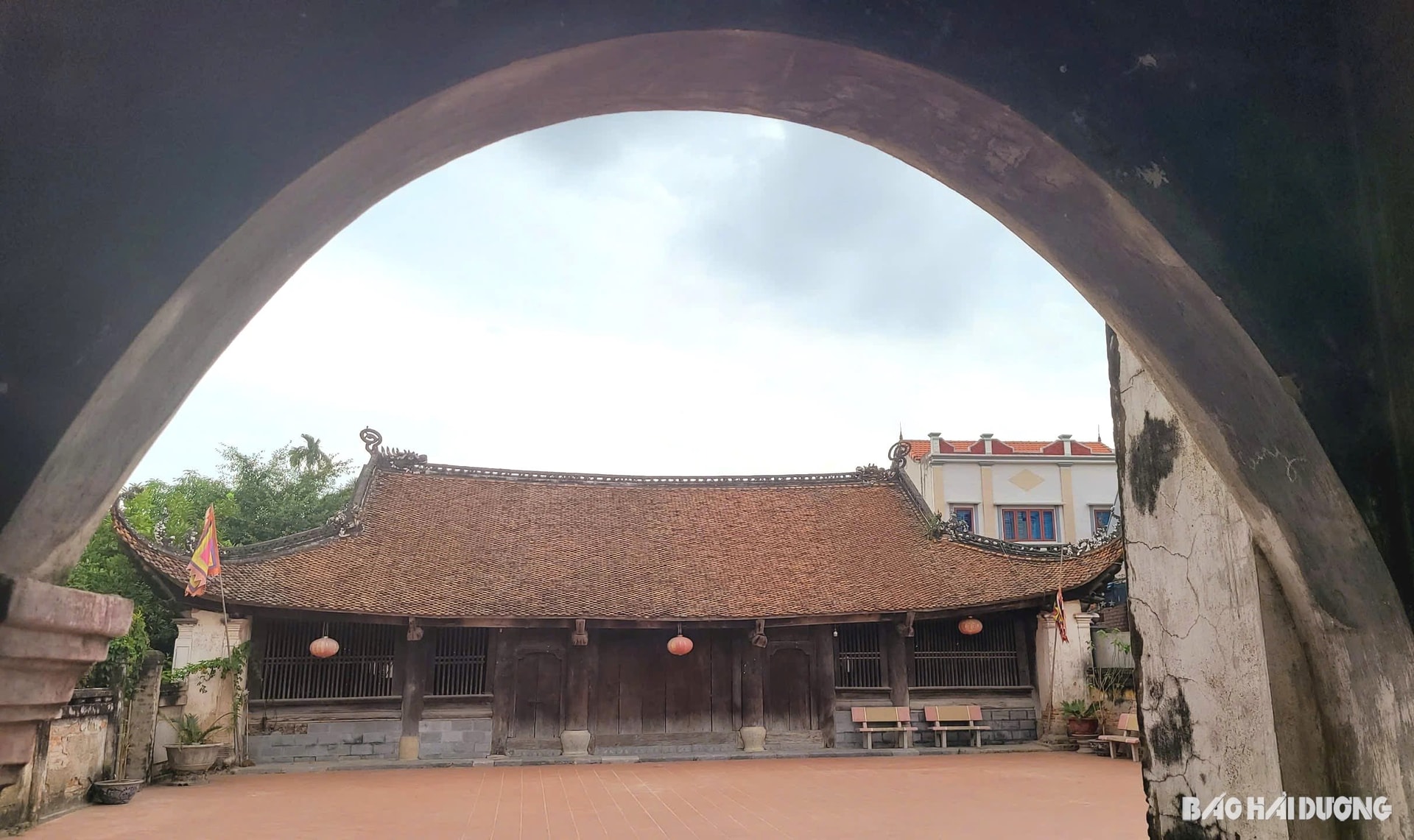Investing in developing rural tourism in Hai Duong is not too costly, but will contribute to preserving cultural values and relics, and bring income to the people.

It was surprising that visitors from the State of Alaska (USA) were eager to visit the ancient village of Thuong Coc, Gia Phuc commune (Gia Loc).
The winding roads leading to the small village have made the visitors' footsteps of exploration not want to stop. They enjoy taking pictures next to the houses and ancient communal houses with unique architecture still preserved in this countryside.
Why? Perhaps it starts with the differences. Where American tourists live, there are mostly high-rise buildings and bustling neighborhoods, but rarely winding village roads surrounded by rows of hibiscus or green bamboo hedges. When they visit the countryside of Vietnam, they not only immerse themselves in peaceful nature but also enjoy learning about unique cultural features.
From the stories of foreign visitors to the ancient village of Thuong Coc, I asked myself: Can Hai Duong focus on exploiting the potential of village tourism or more broadly, rural tourism?
Looking for an answer, I read the Hai Duong Provincial Planning for the period 2021 - 2030, with a vision to 2050 approved by the Prime Minister in 2023 and saw that Hai Duong has determined to develop tourism in a sustainable direction, combining conservation and promotion of the values of each locality. The planning clearly states that Hai Duong focuses on developing cultural tourism, eco-tourism, agricultural and rural tourism and craft village tourism.

Hai Duong has many villages containing historical sediments, with attractive cultural stories for effective tourism. In addition to Thuong Coc, although it no longer retains many ancient features, there are ancient villages such as Thach Loi (Cam Giang) with wooden houses hundreds of years old and the art of ancient Tuong still preserved to this day. Hoach Trach village (commonly known as Vac village) in Thai Hoc commune (Binh Giang) still preserves many vestiges of historical value. In the village, there are many ancient houses and village wells...
This shows that Hai Duong has no shortage of villages and rural areas that can be exploited for cultural and historical tourism. Statistics from the Department of Industry and Trade show that Hai Duong also has more than 60 craft villages, many of which are traditional craft villages with long-standing cultural, historical and economic values. The cuisine of Hai Duong villages is also interesting.
Turning ancient villages into attractive tourist destinations has been done by many countries in the world for a long time. We can mention the ancient fishing village of Portofino on the Mediterranean coast near Genoa City, northern Italy; or the medieval village of Hallstatt located at the foot of the Austrian Alps, which is likened to a fairyland with a long history... Those villages are indispensable attractions when tourists come to Italy or Austria.
To exploit rural tourism, we need a complete information system, building stories of each village in a profound and attractive way. Village tourism products also need to be selected, creating differences, and linking in tours.
Investing in developing rural tourism is not too costly but requires sophistication and participation of the people. What is more important is knowing how to preserve each cultural value and historical relic so that they do not fade away or disappear during the urbanization process, thereby turning them into a "gold mine" of tourism.
Another important and decisive thing is to introduce tourism products to friends from all over the world and attract them. We cannot fail to mention the role of the media, the role of travel agencies and the role of cultural diplomacy.
DUONG LAN